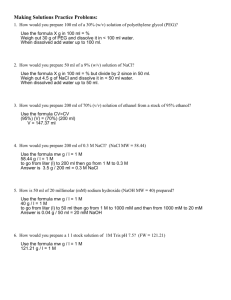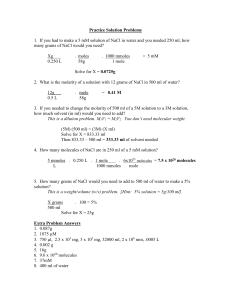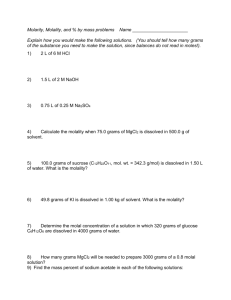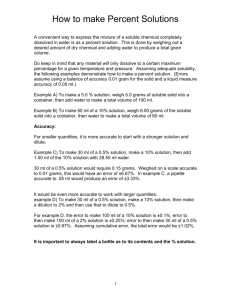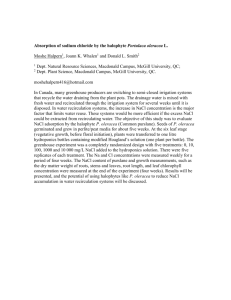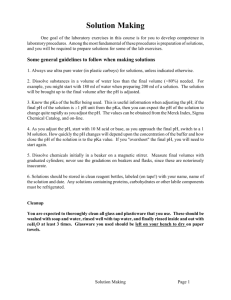Na azide
advertisement
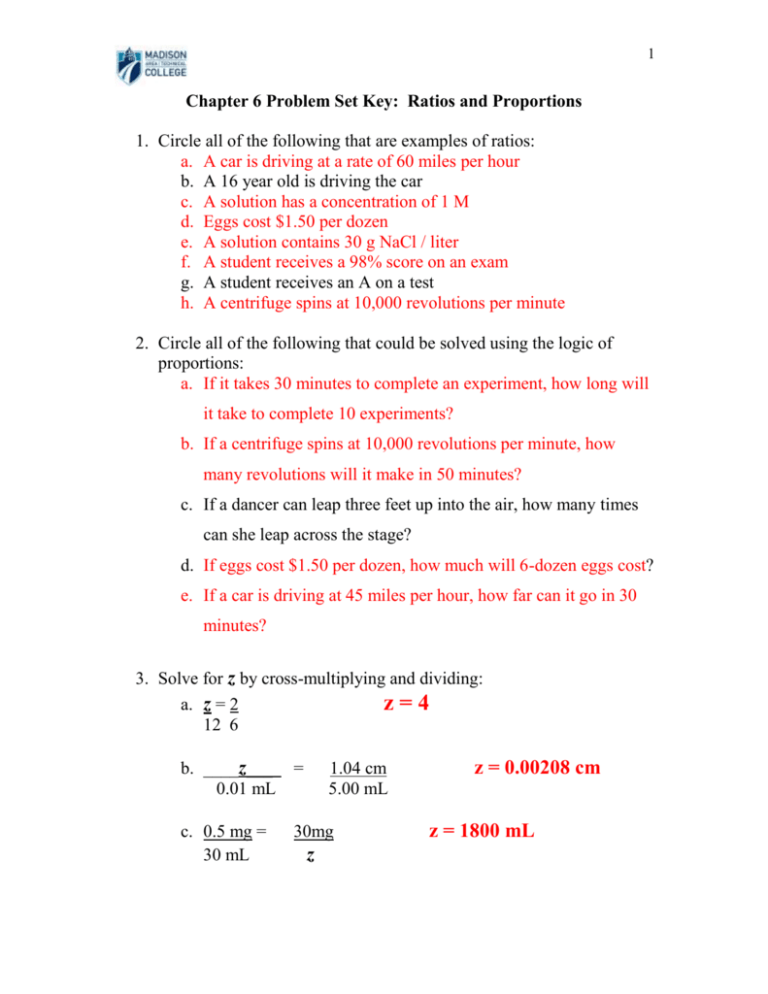
1 Chapter 6 Problem Set Key: Ratios and Proportions 1. Circle all of the following that are examples of ratios: a. A car is driving at a rate of 60 miles per hour b. A 16 year old is driving the car c. A solution has a concentration of 1 M d. Eggs cost $1.50 per dozen e. A solution contains 30 g NaCl / liter f. A student receives a 98% score on an exam g. A student receives an A on a test h. A centrifuge spins at 10,000 revolutions per minute 2. Circle all of the following that could be solved using the logic of proportions: a. If it takes 30 minutes to complete an experiment, how long will it take to complete 10 experiments? b. If a centrifuge spins at 10,000 revolutions per minute, how many revolutions will it make in 50 minutes? c. If a dancer can leap three feet up into the air, how many times can she leap across the stage? d. If eggs cost $1.50 per dozen, how much will 6-dozen eggs cost? e. If a car is driving at 45 miles per hour, how far can it go in 30 minutes? 3. Solve for z by cross-multiplying and dividing: a. z = 2 z=4 12 6 b. ____z___ 0.01 mL = c. 0.5 mg = 30 mL 30mg 1.04 cm 5.00 mL z z = 0.00208 cm z = 1800 mL 2 d. ____z_____ = 9.2 inches2 104 pounds 300 inches2 z = 3.19 pounds 4. In the following problems: First, state the unknown Second, set up the proportion equation (with the proper units) Third, cross-multiply and divide to solve a. If it requires 50 minutes to drive to Beloit, how long will a student who lives in Beloit spend each day commuting to and from school in Madison? 100 minutes b. If it requires 0.5 teaspoon of baking soda to make one loaf of bread, how many teaspoons of baking soda will be required to make 6 loaves? 3 teaspoons c. If a recipe requires 1/4 teaspoon of baking powder to make one batch, how much baking powder is required to make a halfbatch? 1/8 teaspoon d. If there are 1 X 104 blood cells in 1.0 X 10-2 mL sample, about how many blood cells would be in 1.0 mL of blood? 106 cells 3 e. A fermenter is a vat in which microorganisms are grown. The microorganisms produce a material, such as an enzyme, that has commercial value. Suppose a certain fermenter holds 50,000 liters of broth. There are about 2 X 108 bacteria in each mL of broth. About how many bacteria are present in the entire fermenter? 1 X 1016 bacteria f. 10 grams NaCl are required to make 1 liter of a salt solution. How much NaCl is needed to make 250 mL of this solution? 2.5 g NaCl g. A particular solution requires 170 mL of ethanol per liter final volume. How much ethanol is needed to make 102 mL of this solution? 17 mL ethanol h. A particular solution contains 100 mg/mL of enzyme. How much enzyme is needed to make 104 L of solution? 1000 mg or 1 g enzyme 4 i. The components required to make 1 L of a solution are listed as follows: Solution Q component NaCl Na azide Mg sulfate Tris Grams/ 1L 20.0 0.001 1.0 15.0 Fill in the table below, showing how to make 250 L of Solution Q: Solution Q component Grams/ 250L NaCl Na azide Mg sulfate Tris 5000 0.25 250 3750 j. 1 mole of carbon has a mass of 12 grams. (The definition of a “mole” is not important for solving this problem.) What is the mass of 2.5 moles of carbon? 30 g k. 1 mole of table salt (NaCl) has a mass of 58.5 g. What is the mass of 0.75 moles of table salt? 43.875 g


